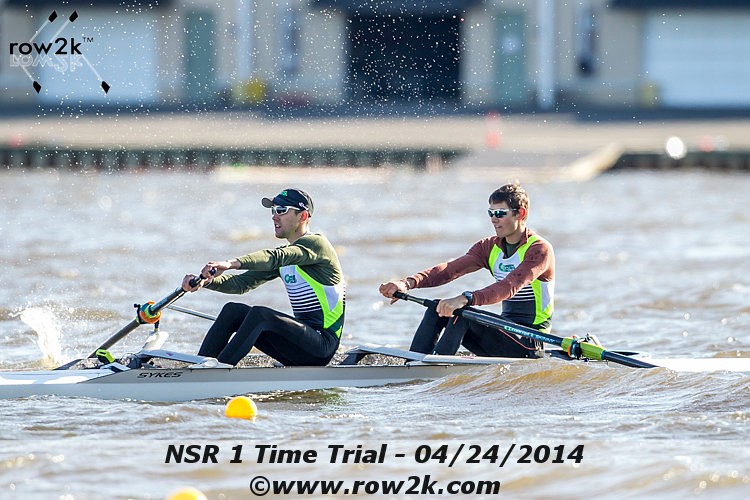Mike Davenport, MaxRigging.com; Ed Hewitt, row2k

If you were asked: What's the connection between rigging and exertion in your rowing, would you be able to answer the question?
Mike Davenport explores just that in this week's rigging excerpt. Leverage is the mechanical set up that allows the work to happen In terms of rowing equipment and rigging when we mention Leverage we are referring to specific parts such as the:
- spread/span
- oar length
- inboard
- blade shape
- positioning of the hips relative to the pin (aka work through).
Technically, "Load" is the thing you are trying to move - the boat, oars, and people in it in our case - and your equipment's mechanical set up is designed to move a Load efficiently.
However, the term Load is also often used to describe the overall effect of the five rigging Leverage parameters above, and how "hard/easy" or "heavy/light" it makes the rigging feel.
Conditions also play a part, sometimes a significant one, including both wind conditions and race length/duration, as well as boat class. We often hear athletes and coaches say things like:
"The load was too heavy/light for that headwind/tailwind," or, "The load was too light for a five-minute 2k in that tail current," or maybe "The load was just right for three miles, but not for a 2k," or "that rig works great for an eight, but not so much for a pair in a headwind."
This is often measured by RPE - the Rate of Perceived Exertion. The Rate of Perceived Exertion (RPE) is a feeling.
Here's a scale adapted from British Cycling.

Bicyclists can simply change gears when conditions warrant, but rowers are stuck with what they have when they leave the dock. There are two interesting parts that we can tease out of this example and apply to our rowing:
- In rowing, we don't have the ability to shift our Leverage on the fly, like a bike. So we need to make our Leverage adjustments BEFORE hand, making the best educated guess we can.
- We don't have hills in rowing (waterfalls don't count) but we do have wind and currents. Think of a head-wind or head-current as going uphill (which increases your RPE), and a tail-wind or tail-current as going downhill (which decreases your RPE).
Read the full article and check out Mike's online rigging course at Balancing Your Rigging and Rate of Perceived Exertion in Rowing
If you enjoy and rely on row2k, we need your help to be able to keep doing all this. Though row2k sometimes looks like a big, outside-funded operation, it mainly runs on enthusiasm and grit. Help us keep it coming, thank you! Learn more.
Comments | Log in to comment |
- Bont Rowing
- Calm Waters Rowing
- Concept 2
- Craftsbury Sculling
- The Crew Classic
- CrewLAB
- Croker
- Durham Boat Co.
- Empacher
- Faster Masters
- Filippi
- Fluidesign
- h2row.net
- HUDSON
- Live2Row Studios
- Nielsen-Kellerman
- Oak Ridge RA
- Peinert Boat Works
- Pocock Racing Shells
- Race1 USA
- RowKraft
- Rubini Jewelers
- Vespoli USA
- WinTech Racing
- Bont Rowing
- Calm Waters Rowing
- Concept 2
- Craftsbury Sculling
- The Crew Classic
- CrewLAB
- Croker
- Durham Boat Co.
- Empacher
- Faster Masters
- Filippi
- Fluidesign
- h2row.net
- HUDSON
- Live2Row Studios
- Nielsen-Kellerman
- Oak Ridge RA
- Peinert Boat Works
- Pocock Racing Shells
- Race1 USA
- RowKraft
- Rubini Jewelers
- Vespoli USA
- WinTech Racing


















05/03/2020 8:32:11 AM